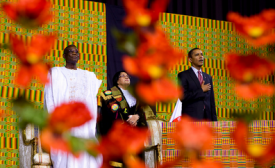public diplomacy 2.0

The Asian Journal of Communication has recently published an article titled "Information Networks and Social Media Use in Public Diplomacy: a comparative analysis of South Korea and Japan."
Having recently returned from the International Studies Association (ISA) conference in Toronto, I wanted to share some thoughts with the PD community, and particularly the scholars who for some reason or other couldn’t attend.
The rise of Web 2.0 tools created a new, easy-to-use channel for diplomats and public diplomacy bureaus to reach far-flung publics. Many foreign ministries adopted the new technology almost immediately, creating a field called public diplomacy 2.0. New problems appeared quickly though.

On Sunday, September 22, 2013, al-Shabab, a Somali-based al Qaeda cell unleashed gunfire on a Kenyan shopping mall, murdering 72 people and injuring over 200 others. The deadliest terrorist attack in Kenya since the 1998 bombing of the U.S. Embassy in Nairobi, the Kenyan mall shooting temporarily brought Africa to the forefront of U.S. news organizations like CNN, MSNBC, and Fox, who typically ignore the continent.
On Sunday, September 22, 2013, al-Shabab, a Somali-based al Qaeda cell unleashed gunfire on a Kenyan shopping mall, murdering 72 people and injuring over 200 others. The deadliest terrorist attack in Kenya since the 1998 bombing of the U.S. Embassy in Nairobi, the Kenyan mall shooting temporarily brought Africa to the forefront of U.S. news organizations like CNN, MSNBC, and Fox, who typically ignore the continent.
Current challenges
To meet the challenges of the 21st century, the approach to public diplomacy will increasingly focus on smart networks of influencers who can convene, connect and mobilize communities. This collaborative approach will support and aggregate the impact of smart, committed individuals around the world.







